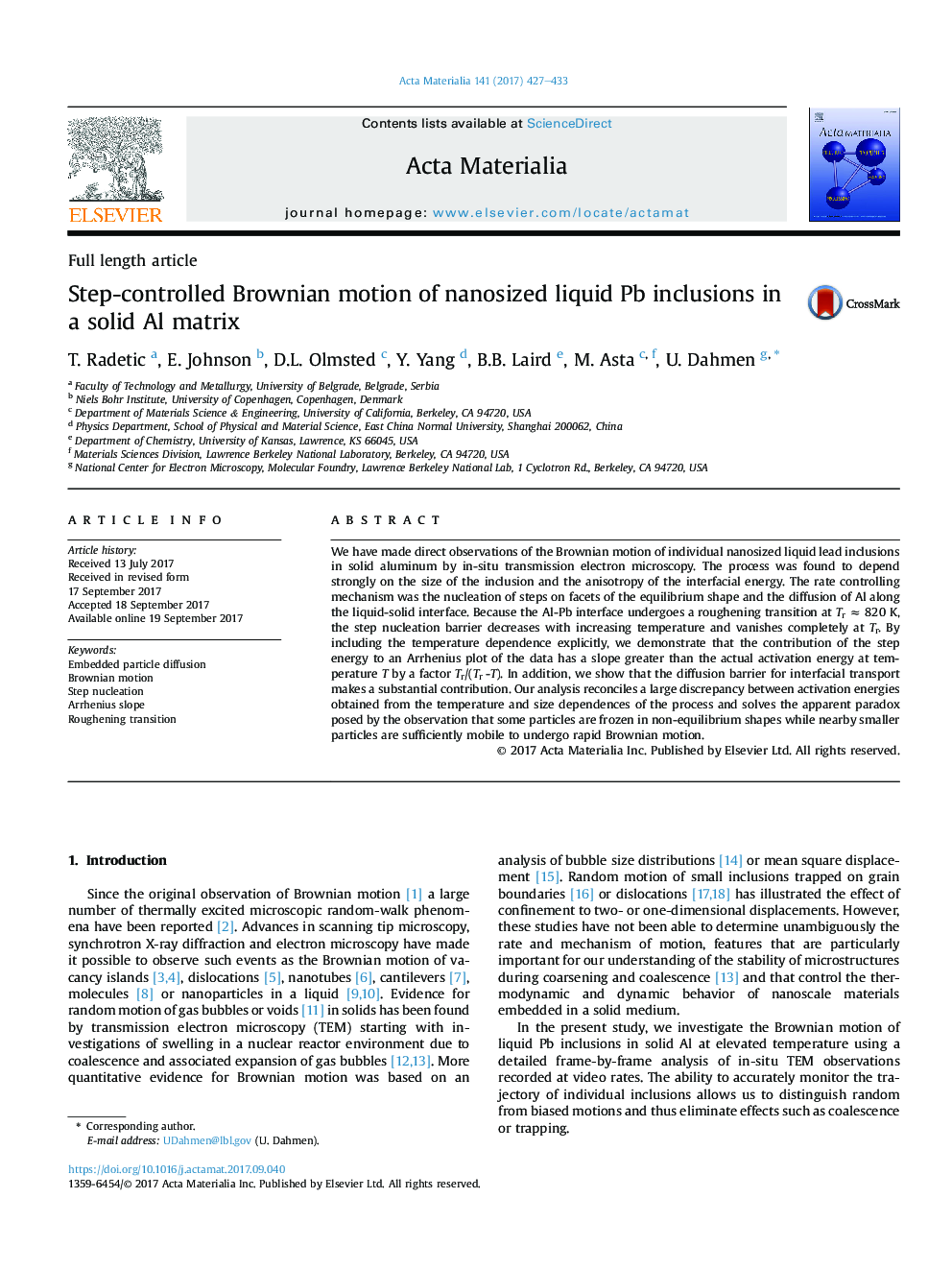| Article ID | Journal | Published Year | Pages | File Type |
|---|---|---|---|---|
| 5435741 | Acta Materialia | 2017 | 7 Pages |
We have made direct observations of the Brownian motion of individual nanosized liquid lead inclusions in solid aluminum by in-situ transmission electron microscopy. The process was found to depend strongly on the size of the inclusion and the anisotropy of the interfacial energy. The rate controlling mechanism was the nucleation of steps on facets of the equilibrium shape and the diffusion of Al along the liquid-solid interface. Because the Al-Pb interface undergoes a roughening transition at Tr â 820 K, the step nucleation barrier decreases with increasing temperature and vanishes completely at Tr. By including the temperature dependence explicitly, we demonstrate that the contribution of the step energy to an Arrhenius plot of the data has a slope greater than the actual activation energy at temperature T by a factor Tr/(Tr -T). In addition, we show that the diffusion barrier for interfacial transport makes a substantial contribution. Our analysis reconciles a large discrepancy between activation energies obtained from the temperature and size dependences of the process and solves the apparent paradox posed by the observation that some particles are frozen in non-equilibrium shapes while nearby smaller particles are sufficiently mobile to undergo rapid Brownian motion.
Graphical abstractDownload high-res image (521KB)Download full-size image
